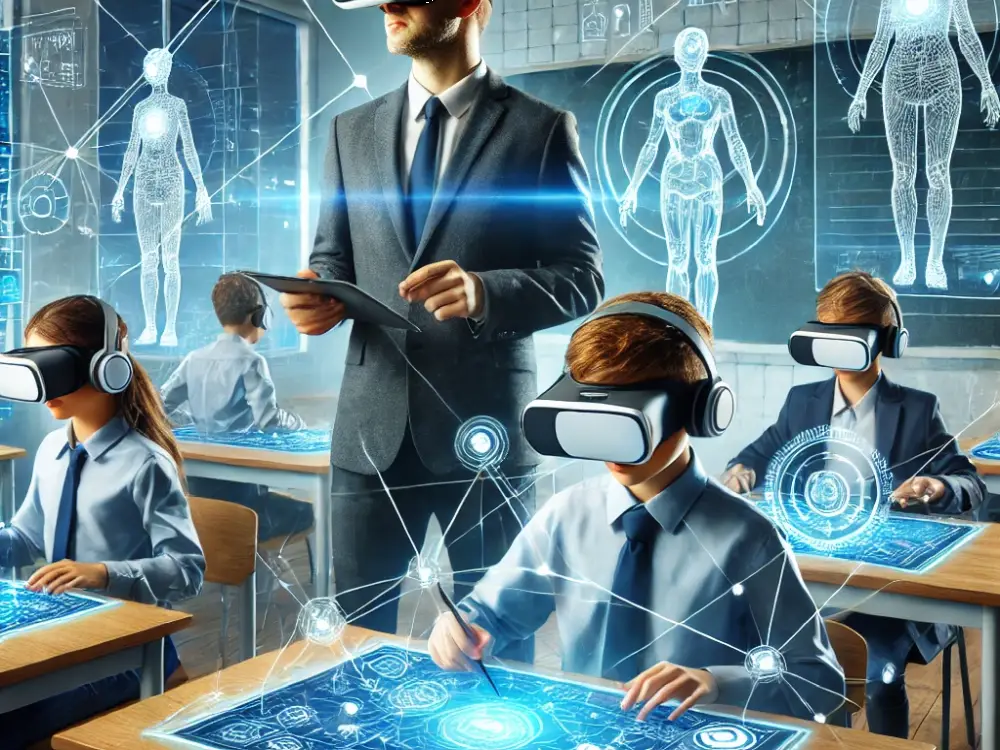Comprehensive Business Guides for Advancing Modern Technology Education And Learning in Schools and Colleges
The assimilation of technology education right into school and university curricula has actually come to be an essential crucial in preparing pupils for a progressively digital labor force. Thorough service guides play an essential function in this transformation by detailing the required frameworks for effective program execution, promoting necessary industry partnerships, and measuring academic outcomes. As educational establishments aim to straighten themselves with market needs, the opportunities and difficulties offered by these overviews warrant a closer exam. Education. What details approaches can be embraced to maximize their effect on both trainees and instructors?
Relevance of Technology Education And Learning
As modern technology remains to evolve at an unmatched rate, the importance of modern technology education and learning has actually ended up being increasingly obvious in today's culture. The integration of modern technology right into various facets of life demands that individuals possess a fundamental understanding of technical concepts and applications. This expertise not just enhances employability but likewise promotes important thinking and analytical skills vital for browsing a vibrant labor force.
In universities, technology education gears up trainees with the capacity to adapt to fast modifications in markets driven by technology. It urges creative thinking and empowers learners to involve with arising innovations, from expert system to data analytics. Technology education and learning promotes digital proficiency, which is critical in an era where info is easily offered yet usually deceptive.

Trick Elements of Effective Guides
Reliable guides for technology education and learning need to encompass several vital components to guarantee that learners gain one of the most from their experiences. Initially, a well-defined educational program is crucial, detailing the purposes, learning results, and the skills to be established. This educational program must be consistently upgraded to show the quickly developing technical landscape, guaranteeing significance and applicability.
Second, thorough resources that include books, online materials, and hands-on devices are essential. These resources ought to be available and diverse, dealing with various finding out choices and designs. Additionally, integrating real-world circumstances and study can enhance understanding and involvement.
Third, analysis approaches need to be included to review learner progress properly. These assessments need to be varied, including developmental and cumulative evaluations that align with the learning goals.
Furthermore, specialist advancement opportunities for instructors are essential. Training programs and workshops can equip instructors with the current pedagogical methods and technological developments.
Last but not least, promoting a joint discovering atmosphere motivates peer communication and understanding sharing. By consisting of these key elements, overviews for modern technology education can dramatically improve the learning experience, preparing trainees for future challenges in a progressively electronic globe.
Building Sector Partnerships
Structure solid industry partnerships is an important aspect of enhancing modern technology education and learning. These cooperations between schools and organizations produce a vibrant ecological community that click for info profits students, companies, and teachers alike. By fostering relationships with sector colleges, leaders and universities can align their educational programs with the advancing needs of the job market, making sure that trainees get appropriate skills and knowledge.
The development of internships, instructions, and mentorship programs works as a keystone of these collaborations. Such chances offer students with hands-on experience, boosting their employability and functional understanding of modern technology applications. Furthermore, sector companions can use understandings right into arising trends and technological advancements, permitting teachers to adjust their teaching methods as necessary.
In addition, partnerships can assist in access to sources, such as devices, software application, and funding for research jobs. These contributions enrich the finding out environment and enable institutions to stay at the center of technological advancement. Inevitably, developing robust industry collaborations is crucial for growing a skilled labor force that meets the needs these days's quickly altering technical landscape, while likewise driving financial development and competitiveness in the wider neighborhood.
Implementing Technology Programs
Executing innovation programs within schools requires a strategic strategy that focuses on both curriculum growth and source allowance. To start effective innovation combination, institutions should initially evaluate their existing framework and identify spaces in sources, consisting of equipment, software, and personnel training. This assessment makes it possible for institutions and universities to develop a customized plan that aligns with their particular academic objectives.
Following, it is necessary to establish an extensive educational program that integrates arising innovations and sector requirements. Collaborating with teachers, industry experts, and stakeholders can make certain that the curriculum stays relevant and effective in preparing pupils for the workforce (AI Tools). Additionally, expert development for faculty is critical, as it outfits instructors with the abilities required to efficiently instruct brand-new innovations
In addition, organizations must stress the significance of hands-on discovering experiences, such as workshops and laboratories, that allow students to apply academic knowledge in useful setups. This experiential approach enhances interaction and promotes crucial thinking. Safeguarding sustainable financing with partnerships and gives can assist broaden and maintain innovation programs, making certain long-lasting success and versatility in an ever-evolving technical landscape.
Measuring Success and Outcomes
Examining the success and results of technology education programs is crucial for validating their impact and directing future enhancements. Effective dimension frameworks should incorporate both qualitative and quantitative metrics, providing an extensive view of program efficiency. Key performance indications (KPIs) such as pupil enrollment figures, retention prices, and course completion portions offer valuable quantitative information.

Incorporating standardized assessments can additionally assess pupils' technological competencies and readiness for the labor force. Benchmarking against comparable institutions enables contextually relevant contrasts, highlighting locations for growth.
Eventually, the continuous evaluation of modern technology education programs promotes a culture of enhancement, making sure that they progress in positioning with sector demands and educational criteria. By methodically gauging success, organizations can not just show responsibility to stakeholders but likewise improve their offerings, thereby enhancing the learning experience and preparing students for the ever-changing technological landscape.
Final Thought

The assimilation of Continued innovation education right into institution and university educational program has actually become an important vital in preparing students for a significantly digital workforce.As modern technology proceeds to advance at an extraordinary rate, the importance of technology education has ended up being progressively apparent in today's society.In educational institutions, innovation education gears up students with the ability to adjust to quick adjustments in markets driven by innovation. By focusing on innovation education, organizations can grow a generation of informed residents capable of leveraging modern technology for individual and societal improvement. The implementation of durable analysis techniques enables institutions to measure success and results, eventually boosting the total effectiveness of technology education and learning initiatives and preparing students for future challenges.